
Features
Grower Profiles
Structures & Equipment
Vegetables
Two years in: Local farming project soars in First Nation community
This container garden has become a fresh produce staple for the Norway House Cree Nation.
January 4, 2022 By Stephanie Gordon
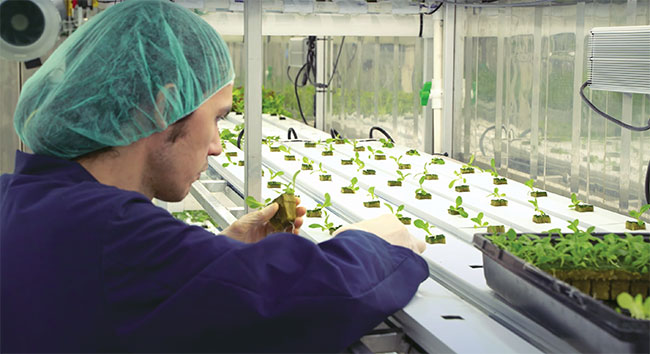 A hydroponic container farm allows Life Water Gardens to grow fresh produce year-round.
All photos courtesy of The Growcer.
A hydroponic container farm allows Life Water Gardens to grow fresh produce year-round.
All photos courtesy of The Growcer. It’s been about two years since Virginia Muswagon and Ian Maxwell started growing fresh produce for Norway House Cree Nation using a hydroponic container garden.
Together they are co-managers of Life Water Gardens (Pimâtisiwin Nipî Kistikânihk) and they seed, harvest, and deliver fresh produce to their local community weekly.
Norway House Cree Nation is one of the largest Indigenous communities in Manitoba, Canada, with a growing population of 7,500 community members.
The area enjoys all four seasons so growing outdoors is limited to the warmer months. However, the addition of a 40-foot hydroponic container garden unlocked the ability to grow fresh vegetables year-round – even at temperatures below freezing.
The operators grow kale, spinach, lettuce, pac choi, and a variety of herbs like cilantro, basil, parsley, and mint. Muswagon and Maxwell also have a packaging container where they store, package and prepare their deliveries to the local school or hospital.
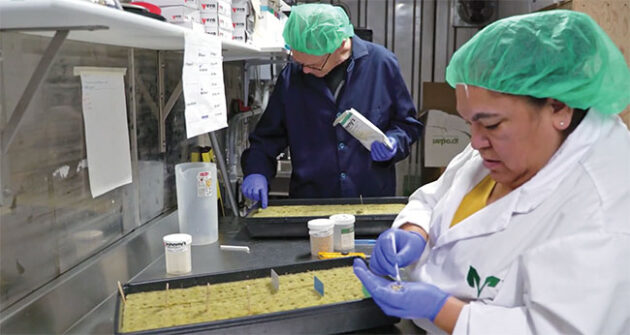
Co-managers Virginia Muswagon and Ian Maxwell oversee the operations as they seed,
harvest, and deliver fresh produce to their local community weekly.
Growing the next generation
Every week, Maxwell delivers the harvest to the local school who is their largest customer.
“The biggest impact is at Helen Betty Osborne [Ininiw Education Resource Centre] . . . [where] 600 to 700 students are consuming our produce every day,” Muswagon says.
The local school has 1,500 students, a vast majority of which are Indigenous. Students are able to visit the cafeteria starting in grade 6, and older students in grades 9 and up help in the cafeteria occasionally preparing salads, sandwiches, soups, and other meals.
“We need to introduce this [healthy eating] at that age or even younger . . . and the chef there is really happy with our produce . . . if you can see it, it speaks for itself,” Muswagon says.
The locally grown produce also stays fresher for longer compared to the waterlogged produce they’ve seen before.
“I’ve been nothing but pleased,” says Kyle Mohr, the culinary arts instructor at the Helen Betty Osborne school. “Virginia is a wonderful role model for the community getting a business up and running.”
Mohr explains how he regularly communicates with the Life Water Gardens team, so the school knows how much to order.
If there’s any extra produce, it doesn’t go to waste. For example, any extra spinach is steamed off and vacuum sealed to be used by home economics classes to make spinach dip, soup, and quiches.
“If we give them enough lead time, they’re able to put together a package and have [what we request] grow over the course of over three or four weeks,” Mohr says. “It’s customizable which is great for us.”
The culinary program at the Helen Betty Osborne school, according to Mohr, tries to give youth an opportunity to work in a commercial kitchen. The students are taught marketable skills such as knife skills, sanitation, and how to use commercial grade equipment. The locally grown produce adds to the mix and keeps the program interesting.
“I’ve worked in a number of northern communities, and I’ve never seen anything like this before. This is unique and fantastic for the whole town,” Mohr says.
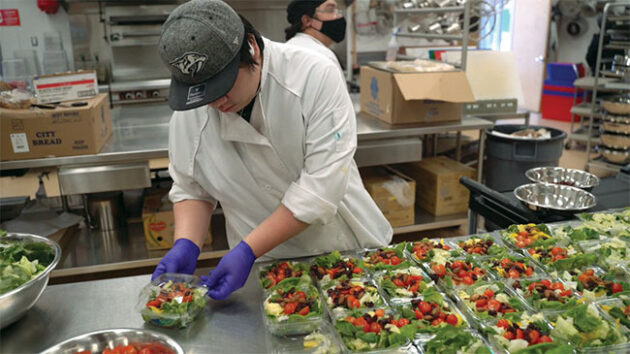
Students at the local school use the locally grown produce when working in the cafeteria.
Opportunity to turn a hobby into a career
Virginia Muswagon and Ian Maxwell didn’t intend to be running a container farming business, but they both were interested in growing plants.
“Even though I don’t have a degree in botany or any official title, I’ve always been interested in gardening,” Maxwell shares. “Super excited to have this kind of project.”
“With me, I remember when my mum and dad were alive, my dad started up a greenhouse and he also grew potatoes,” Muswagon says. She shares how when her dad would bring the fresh harvest to the table she grew to love produce straight from the garden. “I find it more tasty, and that’s when it started for me.”
While weather is less of a concern in an indoor controlled environment, working in the hydroponic container garden still requires hands-on nurturing of the plants. Maxwell shares how they’re still learning as they go and engaging with the community to guide their decisions for the future of the project.
“[At this point,] we’ve established ourselves as self-sufficient,” Maxwell says.
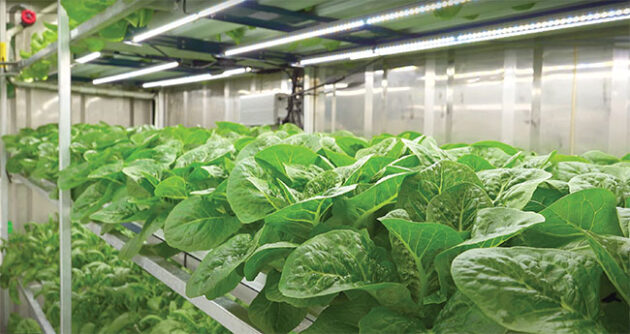
Inside the container farm, the operators grow kale, spinach, lettuce, pac choi, and a variety of herbs like cilantro, basil, parsley, and mint.
There’s room for big and small in vertical farming
Ottawa is the home base of The Growcer, the company that built the hydroponic container garden and is there to help Maxwell and Muswagon grow their project.
Since 2016, the company has grown to partner with more than 25 communities across Canada to grow hyper-local produce year-round through its hydroponic modular farms. What started as a solution for food insecure, remote places expanded as an impactful idea for communities who see the value in growing locally.
“The common success factor we see is we have a handful of community members who enjoy food, gardening, helping fellow community members, and supporting youth . . . Ian, Virginia, they are the primary reasons why the projects are so successful,” says Branavan Tharmarajah, head project consultant with The Growcer. “There’s a handful of community members who take it upon themselves to help others in the community and they take pride in that, and that’s one of the biggest factors of success.”
The modular hydroponic farms are a fraction of the size of larger warehouses also used for vertical farming, but it’s all part of the product mix.
“Just like with renewable energy, we need a variety of vertical farming solutions at different scales to suit different applications,” says Corey Ellis, CEO of The Growcer. “Similar to how we need solar panels on our homes, which coexist with larger solar farms. They both work toward the same goal in different ways.”
The container gardens fit the needs of the communities who use them, like Norway House Cree Nation. But the biggest impact for Ellis is the human aspect.
“For the operators of Growcer farms, the impact is life changing,” Ellis says. “I’ve seen countless times when someone’s decision to become a container farm operator shifted their entire career trajectory. At Growcer, we are fortunate to get to watch as they grow into their new lifestyle, master the challenge of keeping plants healthy, and ultimately, take pride in providing fresh food to their local community.”
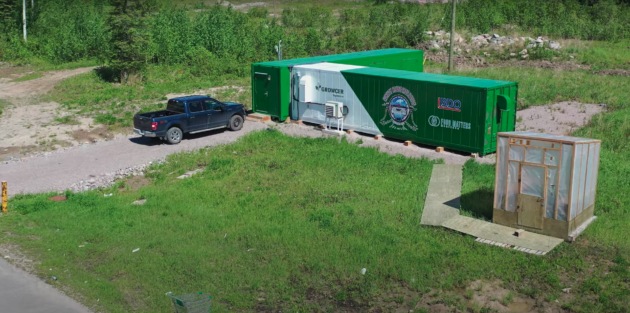
Expanding beyond the community
With two years under their belt, Life Water Gardens plans to expand and add more containers to build a multi-container garden that can feed more people.
Maxwell shares that they currently deliver produce to the local hospital, but also hope to be able to provide greens to the new hospital being built in Norway House. The expansion will create more jobs and expand the Life Water Gardens staff beyond the current team of five.
Norway House Cree Nation also serves as a gateway to the Northern and Eastern communities of Manitoba, and there’s potential to supply fresh produce to the neighbouring communities in Cross Lake, Thompson, Flin Flon and The Pas.
The community-led solution has the potential to change what freshness means to the next generation living in the north.
Watch a video about the Life Water Gardens project:
Stephanie Gordon is editor-in-chief at The Growcer. She can be reached at stephanie@thegrowcer.ca
Print this page